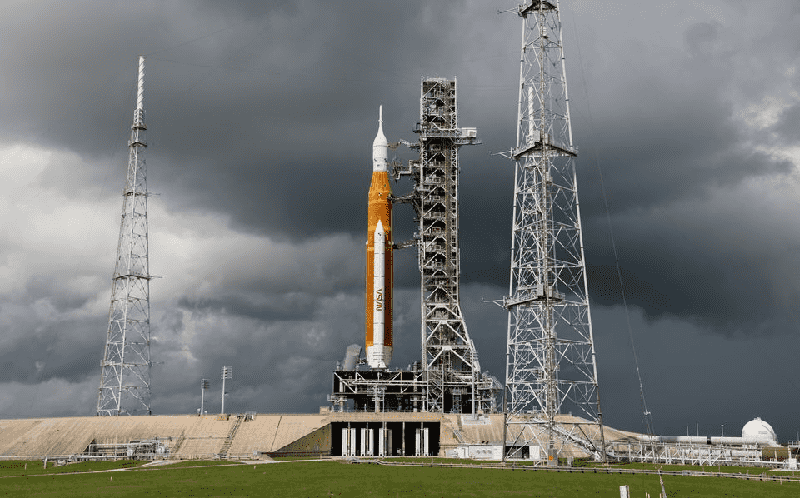On Saturday, NASA called off its latest attempt to launch the historic Artemis 1 moon rocket due to a fuel leak. Technical concerns had stalled the spacecraft on the launchpad for the second time in five days.
After various workarounds to seal the leak of liquid hydrogen pumped into the core stage of the Space Launch System (SLS) rocket failed, mission officials at Kennedy Space Center waited until late in the countdown to scrub the liftoff.
“The severity of the damage, inside one of the rocket engines, made it unlikely that launchpad fixes would be possible, and Artemis would most likely have to be rolled back to the vehicle assembly building for more extensive repairs,” according to Bill Nelson, the chairman of the US space agency.
Therefore, the next backup launch opportunity on Monday is also in jeopardy, and the first test flight of humanity’s first crew-capable moon mission in 50 years will be pushed back even more. According to NASA officials, the next attempt will be postponed until at least the end of September.
“This is part of the space business,” he said. “We’ll go when it’s ready. We don’t go until then, especially on a test flight, because we’re going to stress this and test it, test that heat shield, and make sure it’s right before we put four humans up on the top.
“Although the [next launch] window opens in early October, I suspect it’ll be more like the middle.”
Charlie Blackwell-Thompson, NASA’s Artemis launch director, concurred with the fuel systems team’s advice and called off the launch at 11.17 am local time (4.17 pm BT), with 2 hours and 30 minutes remaining in the countdown.
The fuel leak, discovered during the early morning tanking of 2.76 million liters (730,000 gallons) of liquid hydrogen and oxygen, is unrelated to the engine cooling issue that prompted the first launch attempt to be postponed last Monday. Officials stated that the issue was caused by a defective sensor rather than a problem with the cooling system or engine itself.
In the early hours, Blackwell-Thompson and her team had just begun loading the fuel when the massive leak appeared in the engine compartment at the bottom. Ground controllers attempted to plug it by pausing and restarting fuel flow to seal the gap around a seal in the supply line, as they had done with prior, more minor leaks. They tried it twice and ran helium through the line, but the leak persisted.
After three to four hours of useless efforts, Blackwell-Thompson stopped the countdown.
Mike Sarafin, the mission manager, said it was too early to figure out what caused the leak. However, it could have been caused by an unintended over-pressurization of the hydrogen line earlier in the morning when someone sent commands to the wrong valve.
“This was not a manageable leak,” he said, adding that the escaping hydrogen exceeded flammability limits by two or three times.
During Monday’s attempt, a series of minor hydrogen leaks appeared there and elsewhere on the rocket. Technicians tightened the fittings over the next few days, but Blackwell-Thompson said she wouldn’t know if everything was tight until Saturday’s fueling.
This unforeseen blow for NASA could be discouraging for the organization, which is keen to show its advancement in bringing people to the moon for the first time since the Apollo 17 mission in 1972.
Before personnel board a second test flight in 2024, successful completion of this unmanned 38-day trip to 40,000 miles beyond the moon and a moon landing on Artemis III no earlier than late 2025 is required.

